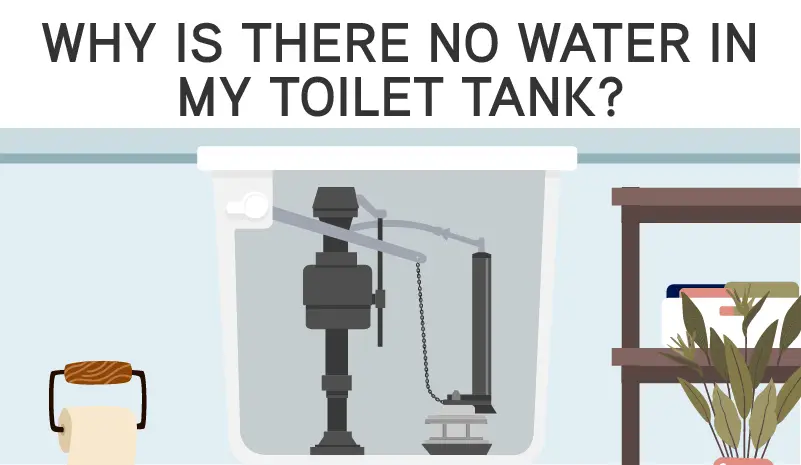
You’ve just gone to flush your toilet and expect to hear swirling water, but all you hear is the pull of the lever. You lift the lid to find no water in the toilet tank. Clearly, there’s a problem. But there’s good news. This issue is typically easy to fix.
We’ll explain some typical causes of a dry toilet tank and answer a few questions in the following sections:
- Common Causes of a Dry Toilet Tank
- No Water in The Toilet Tank FAQs
Common Causes of a Dry Toilet Tank
Dry toilet tanks usually stem from a broken float ball, a fill valve issue, or a worn-out trip assembly. Each issue requires varying levels of plumbing skill but can often be handled by a DIY plumber.
1. Broken or Improperly Positioned Float Ball
Older toilets may use a float ball to control water levels inside the tank. The float ball sits above the water. When the water fills up to the float ball, it stops the inflow. If the ball sits too low in the tank, it may prevent the tank from filling properly.
To fix a float ball issue, take the following steps:
- Remove the toilet tank lid.
- Bend the float arm slightly upwards.
- Keep an eye out for the ball remaining low after adjusting the float arm. If it remains low, replace it.
2. Fill Valve Issue
Newer toilets use float cups instead of float balls. When a new tank fails to fill up, you may need to adjust the fill valve. Sometimes, the valve can slip out of place, requiring manual readjustment. Follow these steps to fix the fill valve:
- Take off the toilet tank lid.
- Locate the water level adjustment rod running between the float cup and the fill valve. Twist the screw on top of the adjustment rod clockwise. This raises the float cup and increases the water level in the tank.
- Test the water level by flushing the toilet. If you raise the float cup too high, turn the screw counterclockwise to lower the water level.
3. Worn Out Trip Assembly
The trip assembly connects the flush handle to the tank. Occasionally, this assembly may get blocked or improperly positioned, preventing it from working while the lid is on. When this happens, the flush cycle can’t be completed.
To check the trip assembly, remove the tank lid and check if it is broken, bent, or worn. If it’s damaged, the assembly will need to be replaced by a professional plumber.
No Water in The Toilet Tank FAQs
Why does the water in my toilet tank disappear?
If the water in your toilet tank keeps disappearing, there has to be a cause. Here are some of the reasons why your toilet tank keeps running on empty:
- Faulty flapper valve: If your flapper valve deteriorates or is improperly aligned, it can leak water into the toilet bowl, slowly emptying out the tank.
- Damaged float cup or ball: Float cups and balls dictate the level of water in your tank. If either sits too low in the tank, it won’t fill up properly.
- Leaking fill valve: A leaking fill valve allows water to seep out of the tank over time. Left unaddressed, this issue could also lead to water damage.
- Obstructed overflow tubes: These tubes prevent the tank from overflowing. If they become obstructed, the water will flow directly into the bowl, leaving you with a dry toilet tank.
- Stuck float arm: A float arm needs to move freely. If the arm gets stuck or obstructed, it will prevent the tank from filling to the proper level.
- Cracks or leaks: In a worst-case scenario, your dry toilet tank could be the result of a crack in the tank. This issue may require toilet replacement or crack sealing (if viable) and needs to be addressed immediately. If your toilet tank is cracked, shut off the water flow to the toilet and call a plumber.
Toilet Tank Not Getting Water? Mr. Rooter® Plumbing Can Help
If you’re dealing with persistent toilet issues, the licensed plumbers at your local Mr. Rooter Plumbing can help. Whether there’s no water in the toilet tank or you need a brand-new toilet, our team has the tools and experience to complete the job quickly. Call now or request an estimate online.

